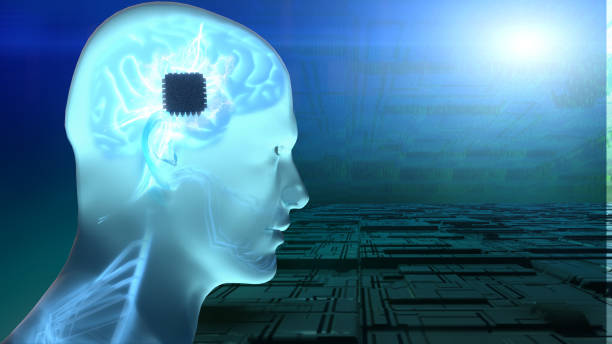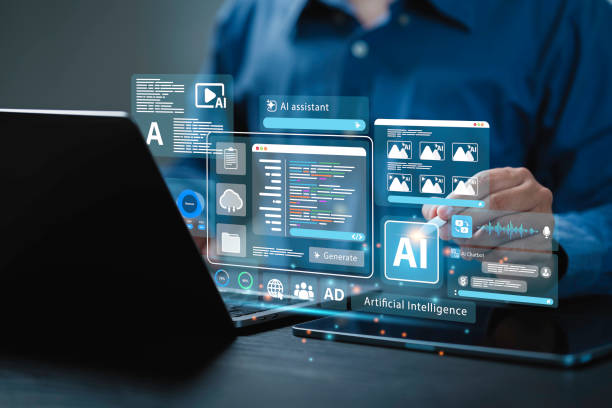What is an Artificial Intelligence Robot and How Does it Work?
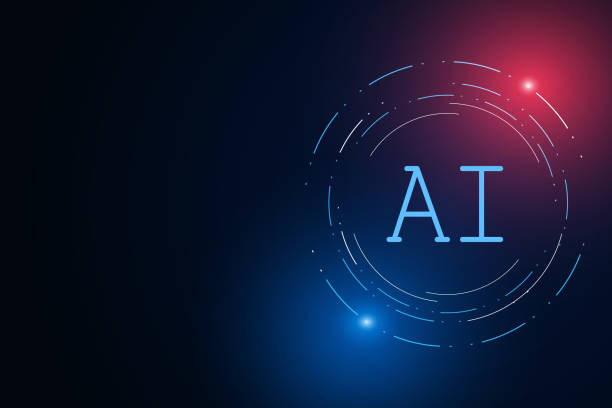
An artificial intelligence robot is a combination of two advanced technologies: artificial intelligence (AI) and robotics.
In simple terms, these robots are machines that are capable of performing tasks that usually require human intelligence, using artificial intelligence algorithms.
These tasks can include learning, problem-solving, decision-making, pattern recognition, and even interacting with humans.
#Machine_learning, one of the main pillars of artificial intelligence, allows these robots to improve their performance by receiving data and experience.
An artificial intelligence robot can identify patterns by analyzing input data and make better decisions in similar situations.
The main components of an artificial intelligence robot are sensors (for receiving information from the environment), a processor (for analyzing information and making decisions), and actuators (for performing tasks).
The artificial intelligence algorithms used in these robots can be of various types, including neural networks, support vector machines, and reinforcement learning algorithms.
Choosing the right algorithm depends on the type of task the robot needs to perform.
In short, an artificial intelligence robot is an intelligent machine that can perform complex tasks using data and algorithms and continuously improve its performance.
This technology has great potential for transforming various industries and improving human lives.
Artificial intelligence robots are transforming various industries.
Is your current online store design not generating the sales you expect?
Rasaweb specializes in professional online store design!
✅ An attractive and user-friendly website aimed at increasing sales
✅ High speed and security for an ideal shopping experience⚡ Get a free online store design consultation with Rasaweb!
Types of Artificial Intelligence Robots and Their Applications
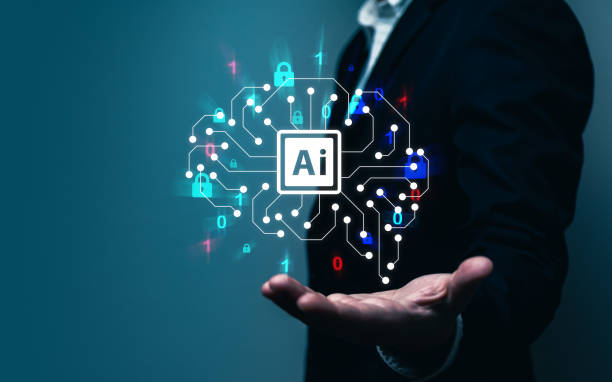
Artificial intelligence robots are designed and built in various types, each of which has its own specific applications.
These robots include industrial robots, service robots, medical robots, and military robots.
Industrial robots are usually used for repetitive and dangerous tasks in production lines.
These robots can perform tasks such as welding, painting, packaging, and assembling parts with high accuracy and speed.
The use of artificial intelligence robots in industry leads to increased productivity, reduced costs, and improved product quality.
Artificial intelligence robots are very effective in this area.
Service robots are used in various environments such as hospitals, hotels, restaurants, and residential homes.
These robots can perform tasks such as cleaning, delivering food, caring for the elderly and children, and answering customer questions.
Artificial intelligence robots in the service sector help to provide better and more efficient services.
Medical robots are used in various fields such as surgery, rehabilitation, and drug delivery.
These robots can perform complex surgeries with high precision and help patients in the rehabilitation process.
Artificial intelligence robots in the medical sector help to improve the accuracy and efficiency of treatment.
Military robots are used in various fields such as reconnaissance, bomb disposal, and electronic warfare.
These robots can perform tasks in dangerous environments that are very dangerous for humans.
Artificial intelligence robots in the military sector help to reduce human casualties.
Advantages and Disadvantages of Using Artificial Intelligence Robots

The use of artificial intelligence robots has many advantages.
These advantages include increased productivity, reduced costs, improved product quality, reduced occupational hazards, and better and more efficient services.
Artificial intelligence robots can work around the clock without fatigue, which leads to increased productivity and reduced costs.
However, the use of artificial intelligence robots also has disadvantages.
These disadvantages include job losses, increased economic inequality, and ethical concerns.
Replacing humans with robots can lead to job losses and increased unemployment.
Also, the use of artificial intelligence robots can lead to increased economic inequality, as the profits from the use of these robots usually go to a limited number of people.
In addition, the use of artificial intelligence robots raises ethical concerns.
These concerns include the accountability of robots in the event of errors, the protection of information privacy, and the possibility of using robots for illegal purposes.
To minimize the disadvantages of using artificial intelligence robots, policymakers need to take appropriate action.
These measures include providing the necessary training to workers to adapt to new jobs, creating support networks for the unemployed, and developing appropriate laws and regulations for the use of artificial intelligence robots.
Artificial intelligence robots should be developed in a way that benefits society.
| Advantages | Disadvantages |
|---|---|
| Increased Productivity | Job Losses |
| Reduced Costs | Increased Economic Inequality |
| Improved Quality | Ethical Concerns |
Challenges of Developing and Implementing Artificial Intelligence Robots
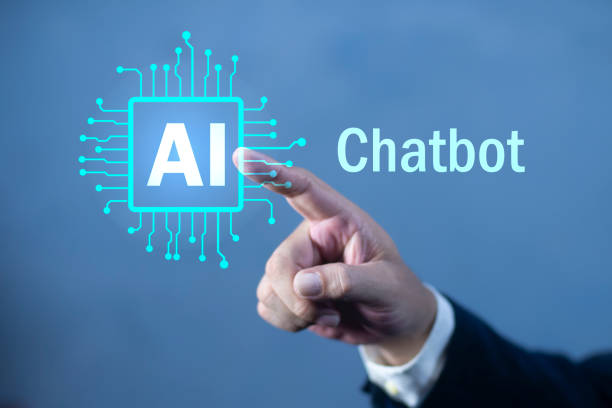
Developing and implementing artificial intelligence robots presents numerous challenges.
These challenges include the need for large amounts of high-quality data, the complexity of artificial intelligence algorithms, a shortage of skilled professionals, high development and maintenance costs, and security concerns.
Artificial intelligence algorithms need a large amount of high-quality data for learning and proper functioning.
Collecting and preparing this data can be time-consuming and expensive.
Artificial intelligence robots require accurate data.
Artificial intelligence algorithms are very complex, and their design and implementation require a high level of knowledge and expertise.
A shortage of skilled professionals in this field is one of the main obstacles to the development and implementation of artificial intelligence robots.
Developing and maintaining artificial intelligence robots is costly.
These costs include hardware, software, personnel, and training costs.
Artificial intelligence robots require investment.
Artificial intelligence robots can be vulnerable to cyber attacks.
Hackers can gain control of robots by infiltrating their systems and use them for their own purposes.
To address these challenges, more investment is needed in artificial intelligence research and development, training should be provided to experts, and appropriate security standards should be developed for artificial intelligence robots.
Are you tired of your company’s website failing to meet your expectations? With Rasaweb, design a professional website that showcases the true face of your business.
✅ Increase the attraction of new customers and sales leads
✅ Increase the credibility and trust of your brand among your audience
⚡ Get a free website design consultation!
The Future of Artificial Intelligence Robots and Their Impact on Human Life

The future of artificial intelligence robots is very bright and promising.
The increasing advances in artificial intelligence and robotics will lead to the development of smarter, more efficient, and more reliable robots.
These robots can create great transformations in various fields such as health care, education, transportation, agriculture, and industry.
Artificial intelligence robots are changing the future.
In the field of health care, artificial intelligence robots can help doctors diagnose diseases, perform complex surgeries, and provide personalized care to patients.
In the field of education, artificial intelligence robots can help students learn lessons, complete assignments, and prepare for exams.
In the field of transportation, artificial intelligence robots can guide self-driving cars and manage traffic.
In the field of agriculture, artificial intelligence robots can harvest crops and control pests.
Artificial intelligence robots improve the quality of life.
However, we need to be prepared to deal with the potential challenges arising from the development of artificial intelligence robots.
These challenges include job losses, increased economic inequality, and ethical concerns.
To minimize these challenges, policymakers need to take appropriate action and prepare society to accept new technologies.
Artificial intelligence robots should benefit everyone.
Case Study – The Application of Artificial Intelligence Robots in the Automotive Industry

The automotive industry is one of the industries that widely uses artificial intelligence robots.
These robots are used in various stages of automobile production, including welding, painting, assembling parts, and quality control.
The use of artificial intelligence robots in the automotive industry has led to increased productivity, reduced costs, and improved automobile quality.
Artificial intelligence robots have transformed the automotive industry.
For example, Tesla is one of the pioneers in the use of artificial intelligence robots in the automotive industry.
The company uses advanced robots to produce its electric vehicles.
These robots are capable of performing complex tasks that are very difficult or dangerous for humans.
Tesla’s artificial intelligence robots are very advanced.
In addition, artificial intelligence robots play an important role in the development of self-driving cars.
Using data collected from sensors and cameras, these robots identify the environment around the vehicle and make the decisions necessary for safe driving.
It is expected that in the near future, self-driving cars will be widely available to the public and will play an important role in transportation.
Artificial intelligence robots make self-driving cars possible.
Comparing Artificial Intelligence Robots with Humans – Strengths and Weaknesses

Artificial intelligence robots and humans each have their own strengths and weaknesses.
Artificial intelligence robots excel at performing repetitive tasks, complex calculations, and processing large amounts of data.
These robots can work around the clock without fatigue and make fewer mistakes than humans.
Artificial intelligence robots surpass humans in accuracy and speed.
On the other hand, humans excel in areas such as creativity, empathy, understanding emotions, and decision-making in uncertain situations.
Humans are able to learn from experiences, adapt to new environments, and solve complex problems.
Artificial intelligence robots cannot yet replace human creativity.
In general, it can be said that artificial intelligence robots are suitable for performing tasks that require accuracy, speed, and repetition.
While humans are better suited for performing tasks that require creativity, empathy, and critical thinking.
In the future, cooperation between humans and artificial intelligence robots is expected to lead to increased productivity and improved quality of life.
Artificial intelligence robots and humans complement each other.
| Strengths of Artificial Intelligence Robots | Strengths of Humans |
|---|---|
| High Accuracy and Speed | Creativity and Innovation |
| Performing Repetitive Tasks | Empathy and Understanding Emotions |
| Processing Large Amounts of Data | Decision-Making in Uncertain Situations |
The Impact of Artificial Intelligence Robots on the Labor Market and Jobs
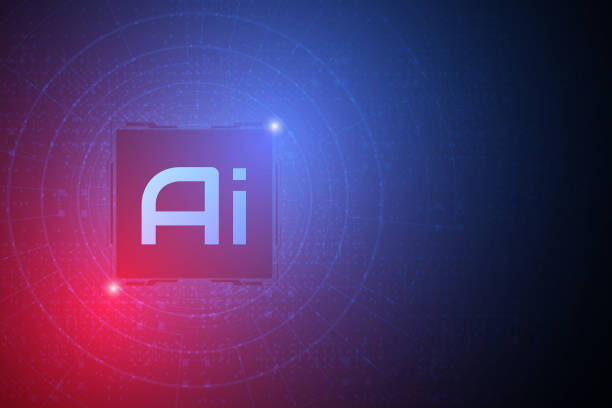
The development of artificial intelligence robots will have significant impacts on the labor market and jobs.
Some jobs will be completely replaced by robots, while others will change and require new skills.
Artificial intelligence robots are changing the structure of the labor market.
Jobs that require performing repetitive, routine, and physical tasks are more at risk of being replaced by robots.
These jobs include production line operators, taxi and truck drivers, office workers, and construction workers.
Artificial intelligence robots can replace repetitive jobs.
On the other hand, jobs that require creativity, empathy, critical thinking, and communication skills are less at risk of being replaced by robots.
These jobs include doctors, teachers, lawyers, artists, and managers.
Artificial intelligence robots cannot replace creative jobs.
To adapt to changes in the labor market, people need to learn new skills and prepare themselves for new jobs.
These skills include technical skills, problem-solving skills, communication skills, and teamwork skills.
Artificial intelligence robots require a skilled workforce.
Does your company’s website perform as well as your brand deserves? In today’s competitive world, your website is your most important online tool. Rasaweb, a specialist in designing professional corporate websites, helps you to:
✅ Attract the credibility and trust of customers
✅ Turn website visitors into customers
⚡ Get a free consultation!
Ethics and Accountability in the Development of Artificial Intelligence Robots
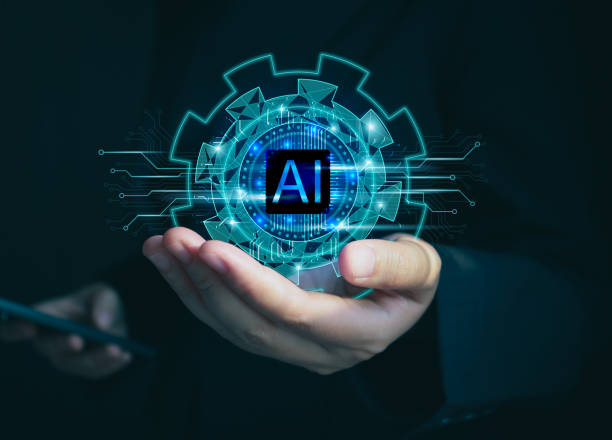
The development of artificial intelligence robots raises new ethical and accountability issues.
These issues include the accountability of robots in the event of errors, the protection of information privacy, and the possibility of using robots for illegal purposes.
Artificial intelligence robots must be developed in accordance with ethical principles.
If an artificial intelligence robot makes an error and causes harm to people or property, who will be responsible? Will the robot’s manufacturer, the robot’s user, or the robot itself be responsible? These questions require careful consideration and the development of appropriate laws and regulations.
Artificial intelligence robots must be accountable.
Artificial intelligence robots collect and process large amounts of personal information.
Protecting the privacy of this information is of utmost importance.
Robot manufacturers need to take appropriate steps to protect this information and prevent its unauthorized use.
Artificial intelligence robots must protect the privacy of individuals.
In addition, there are concerns about the possibility of using robots for illegal purposes.
For example, robots could be used for espionage, assassination, or cyber attacks.
Policymakers need to take appropriate steps to prevent such abuses and develop appropriate laws and regulations for the use of robots.
Artificial intelligence robots should not be used for illegal purposes.
Key Points for Successfully Using Artificial Intelligence Robots
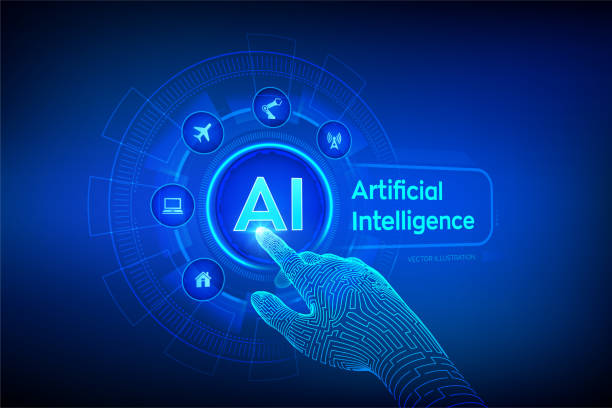
To successfully use artificial intelligence robots, the following key points must be considered.
First, a clear objective for using the artificial intelligence robot must be defined.
The artificial intelligence robot should be used to solve a specific problem or improve a specific process.
Artificial intelligence robots must be used purposefully.
Second, sufficient high-quality data must be provided to train the artificial intelligence robot.
Artificial intelligence robots require a large amount of high-quality data to learn and function correctly.
Third, a team of specialized and experienced professionals must be formed to develop and implement the artificial intelligence robot.
This team should include artificial intelligence specialists, software engineers, and specialists in the field of interest.
Artificial intelligence robots require experts.
Fourth, the performance of the artificial intelligence robot must be continuously evaluated and improved.
The artificial intelligence robot must be continuously trained with new data, and its performance must be tested in different conditions.
Fifth, ethical and accountability issues must be considered when using artificial intelligence robots.
Artificial intelligence robots must be developed in accordance with ethical principles and protect the privacy of individuals.
By following these tips, artificial intelligence robots can be used successfully and benefit from their advantages.
Artificial intelligence robots can lead to progress.
Frequently Asked Questions
| Question | Answer |
|---|---|
| What is an artificial intelligence robot? | It is a robot that uses artificial intelligence capabilities to understand the environment, reason, learn, and make decisions in order to perform complex tasks independently. |
| What is the main difference between a regular robot and an artificial intelligence robot? | Artificial intelligence robots can learn and adapt to their environment, while regular robots typically operate based on fixed and predetermined programming. |
| In what areas are artificial intelligence robots used? | In areas such as industry (production lines), medicine (robotic surgery), services (customer support, smart vacuum cleaners), exploration (space and underwater), and entertainment. |
| How do artificial intelligence robots learn? | They acquire new skills through machine learning (ML) and deep learning algorithms, by analyzing big data and identifying patterns. |
| Can artificial intelligence robots have emotions? | Currently, no. They can identify or simulate emotions, but do not have a real experience of emotions like humans. |
| What are the most important benefits of using artificial intelligence robots? | Increased productivity, reduced human error, performing dangerous or repetitive tasks, and providing innovative and efficient services. |
| What challenges exist in the development of artificial intelligence robots? | The need for large amounts of high-quality data, the complexity of algorithms, ethical issues, cybersecurity, and the high cost of research and development. |
| Are artificial intelligence robots dangerous to humans? | By adhering to safe design principles and ethical regulations, no. Concerns are more related to social and economic impacts such as changes in the labor market. |
| What is an example of an artificial intelligence robot in everyday life? | Smart vacuum cleaner robots (like Roomba) that automatically map and clean the house, or smart voice assistants (like Siri and Alexa). |
| How is the future of artificial intelligence robots predicted? | They are expected to become smarter, more autonomous, and capable of more complex interactions with humans, playing a more prominent role in industry, medicine, transportation, and everyday life. |
And other services of Rasa Web Advertising Agency in the field of advertising
Smart UI/UX: A dedicated service for increasing sales growth based on the use of real data.
Smart Content Strategy: Professional optimization for analyzing customer behavior using user experience customization.
Smart Digital Branding: A professional solution for online growth with a focus on precise audience targeting.
Smart Website Development: A professional solution for online growth with a focus on SEO-driven content strategy.
Smart Conversion Rate Optimization: Transform click-through rates with the help of marketing automation.
And more than hundreds of other services in the field of internet advertising, advertising consulting and organizational solutions
Internet Advertising | Advertising Strategy | Advertorials
Resources
Step-by-step guide on smart robots
,What is a smart robot? What are the applications of smart robots?
,Artificial intelligence serving robots; transformed from the second generation
,Learn about the advantages and disadvantages of artificial intelligence robots
? To boost your business and be seen in the digital world, Rasaweb Afarin is your trusted partner. From website design with a modern user interface to comprehensive digital marketing strategies, we are with you.
For advice and information about our services, contact Rasaweb Afarin experts.
📍 Tehran, Mirdamad Street, next to the Central Bank, Kazerun Jonoubi Alley, Ramin Alley No. 6
“`


